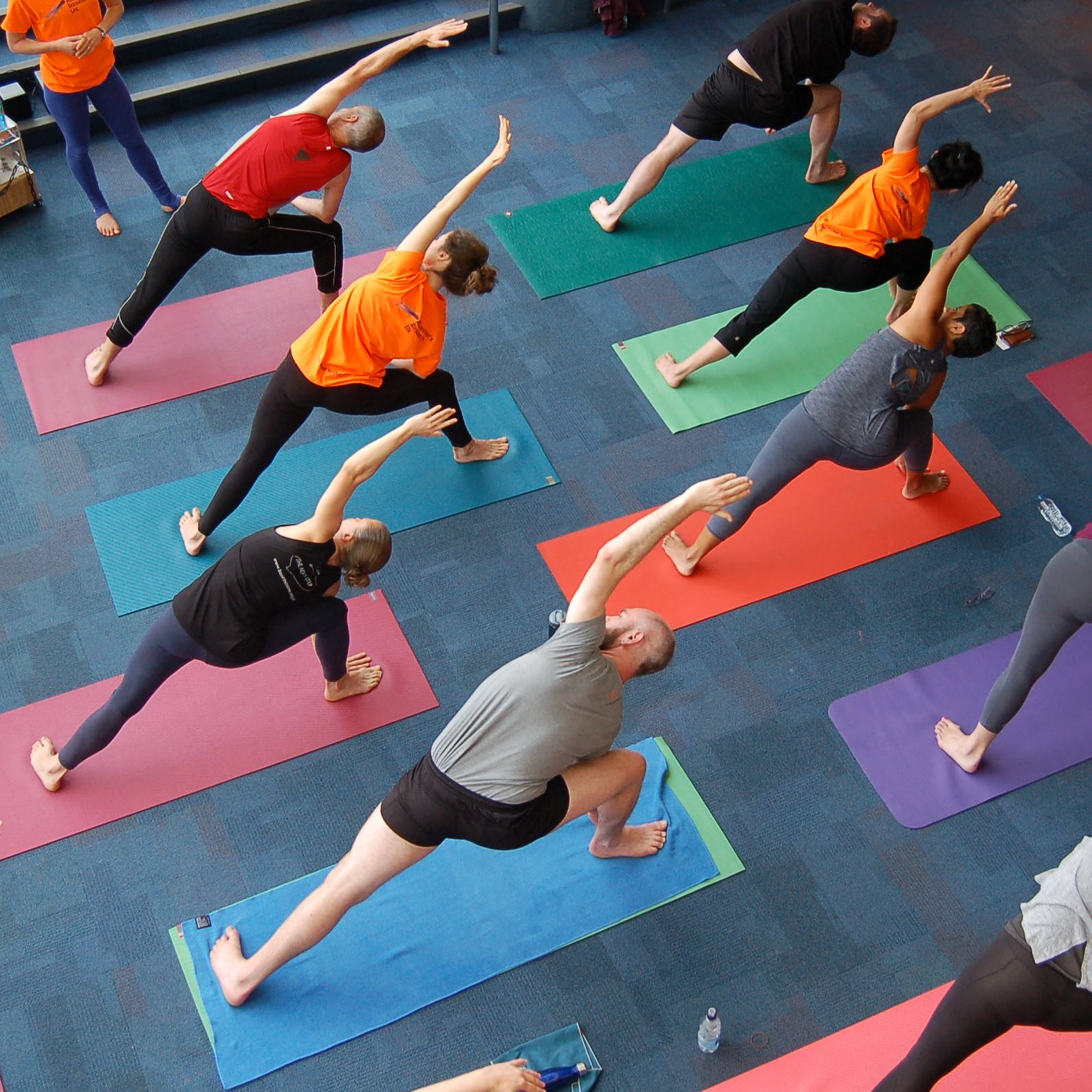We get lots of eager new starters curious about yoga flow, and one of the most common questions we’re asked is, “How do I know I’m ready to do the Level 2 flow or dynamic classes?”
While the names of classes, styles and level of challenge may differ depending on where you practice, at Barefoot, there is one key difference between a beginners’ class and the next step up. Beginners’ classes are heavily alignment based. If you can’t tell your quads from your hams, or think the latissmus dorsi is possibly some kind of endangered whale species, this is a good place to start.
Flow or dynamic yoga is sometimes referred to as vinyasa yoga. One of the interpretations (and there are loads) of vinyasa is “to place in a special way”. It refers to the linking of movement and posture together with the breath in an intricate, fluid progression to give you a balanced experience physically, but also to allow you to surrender the critical thinking mind and just, well, flow.
This poses two immediate problems for the beginner. First, the pace tends to be quicker, as you might go into the posture on an inhale, and then flow out into another on the exhale. Second, the flowing nature is an invitation to drop into the rhythm of the class, giving the mind an order to take a back seat, which is something most of us desperately need. However, as a beginner, not knowing what’s coming or whether you’re doing it “right” can cause even more mind-chatter, confusion, or just plain unkind thoughts towards your own capabilities, or the instructor’s clearly sadistic tendencies.
Here are 3 tips to help you make your first ever flow/dynamic class safe and enjoyable:
- Learn to distinguish between challenge and pain in your body – “playing the edge”
Erich Schiffmann on playing the edge: “If you don’t go far enough, there is no challenge to the muscles, no intensity, no stretch, and little possibility for opening. Going too far, however, is an obvious violation of the body, increasing the possibility of both physical pain and injury. Somewhere between these two points is a degree of stretch that is in balance: intensity without pain, use without abuse, strenuousness without strain.”
Knowing the difference and keeping that balance in every posture requires steady mindfulness. That perhaps is the biggest part of the challenge.
- Learn the foundations of alignment – and stick to them!
When the body is positioned incorrectly, the muscles and joints become subject to undue stress. The main areas affected tend to be the wrists, knees, low back and shoulders. These are areas where most of the weight-bearing occurs in common yoga postures – for example, the knees and low back in standing postures like warriors, and the wrists and shoulders in any arm-balancing posture: plank, chaturanga, downward dog, and company.
Practice the right alignment for these particular joints in static posture (ie. holding for 5 breaths or more) until they become a second nature. When you start flowing, adding movement such as transitioning from triangle to warrior, and then on to side angle, or the ubiquitous plank-chaturanga-downward dog flow, you can be sure that your muscle memory, your newfound body-wisdom, is keeping your joints and muscles happy and healthy.
So you might already feel quite grounded in your alignment foundations. Again, mindfulness is key. Sometimes being caught up in the fast-paced flow, we might sacrifice slightly our attention to correct posture, contributing to habits that over time—despite our good intentions—can lead to injury and physical harm. This is why it’s generally advised to mix up the styles of yoga you practice, and throw in a complete beginners’ class every now and again, to keep form fresh in your mind/body.
- Be your own greatest teacher
Seek advice from professionals, but always trust your intuition. Consult an experienced yoga teacher or doctor if you have pain in your body, but don’t let someone else’s advice replace your own. The greatest guru could never feel exactly how you feel, so listen with discernment, and listen most intently to your own body!
